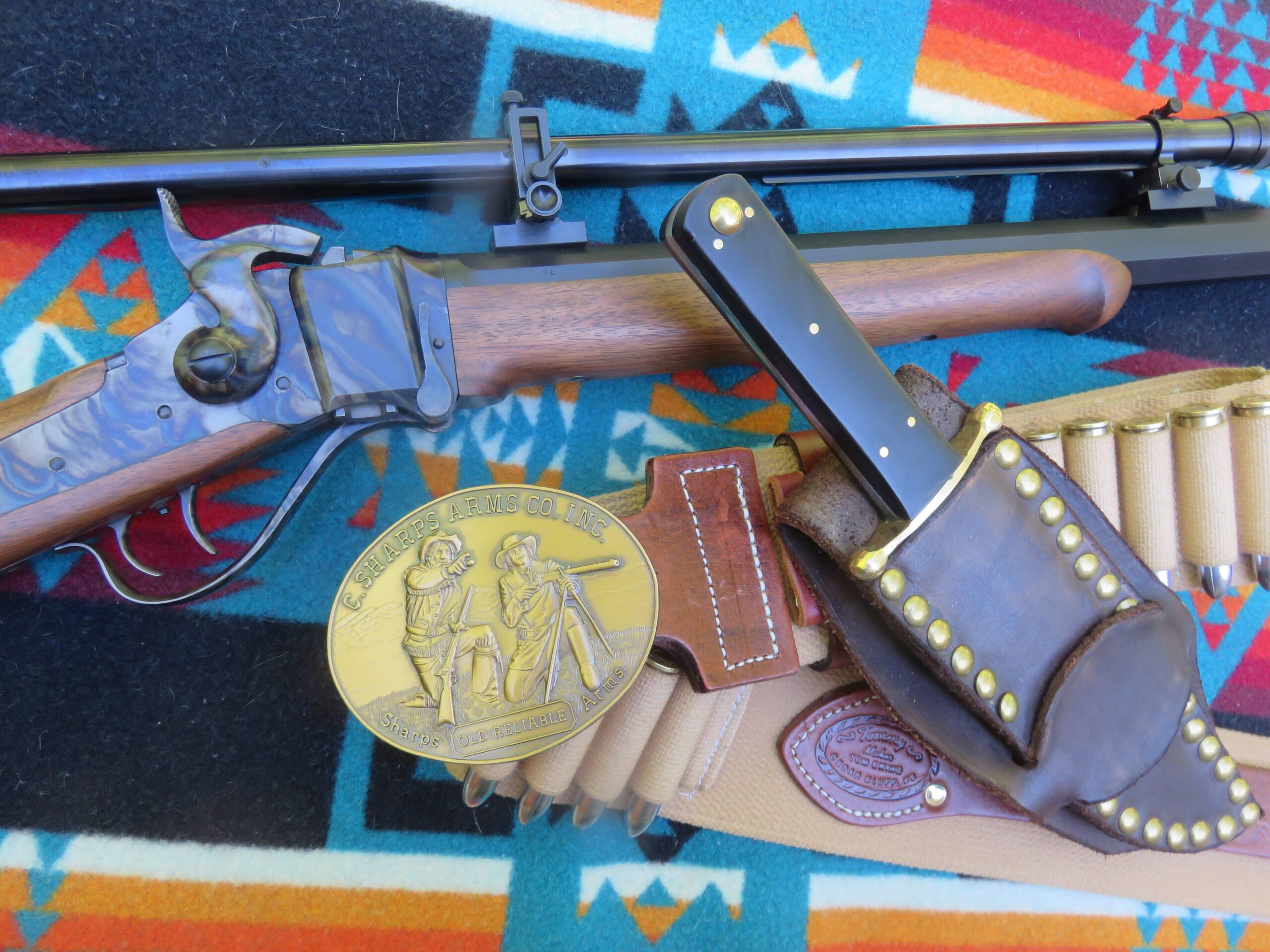
By Mike Nesbitt | Contributing Editor
One thing that needs to be mentioned, again just in case it already has been mentioned, is the individualism of black powder rifles and cartridges.
In other words, a load that works well in one rifle might not do so hot in another gun even though they are the same caliber. Also, in each caliber, getting the right loading for a particular bullet can easily require “tweaking” where you change the powder charge or the seating depth of the bullet or any other “adjustable” part of making the handloads. Sometimes finding the right characteristics of the loads can almost drive you crazy… (Don’t ask me how I know…)
My “case” in point, this time, is the .45-70 and the rifle is my new Bridgeport Model Sharps ’74 with the MVA 10X scope mounted to it. I got off to a bad start, we might say, with this rifle at Quigley. No, I can’t blame the gun or the ammo, any bad start was all my fault because I shot the Quigley Match with a rifle which I’d had for only five days and I shot it with ammo that was loaded into virgin brass.
In other words, I didn’t have anything “dialed in” with the exception of some sight settings which were noted while sighting-in during the days at “Quigleyville” prior to the beginning of the match.
Virgin brass is never good for competitive shooting with black powder loads because the cases are rather “stiff” and they don’t release the bullets consistently, shot after shot. That’s one reason why competitive shooters prefer using brass that is annealed, softened. The softer brass will release the bullets much more consistently, which allows the bullets to begin their speedy trips down the barrel to the muzzle and then beyond the muzzle on to the target.
Another way of getting more consistent ammunition is to use un-sized brass, fire-formed in the sane rifle that the cases will be used. Whether that is as good as annealing or not, I won’t begin to say and that answer could easily be variable from one rifle to the next. For my own ammo, I generally shoot reloads in un-sized cases, especially in straight-walled cases. The un-sized cases should release their bullets more consistently than the same bullets fired in re-sized cases.
One good thing about the shooting I did at Quigley with this new rifle in .45-70 caliber was that I came home with about 100 fired cases, fire-formed and ready to be reloaded. And there was more than that. I also came home with a new bullet mold, one that I had wanted to try for a couple of years, Saeco’s #645 which is a good-looking bullet for the .45-70 weighing 480 grains and it has four lube grooves. Casting with that new mold began soon after the truck was unloaded from the trip and soon enough, some good-looking bullets were made using a 25-1 lead-tin alloy from Buffalo Arms Company (buffaloarms.com).
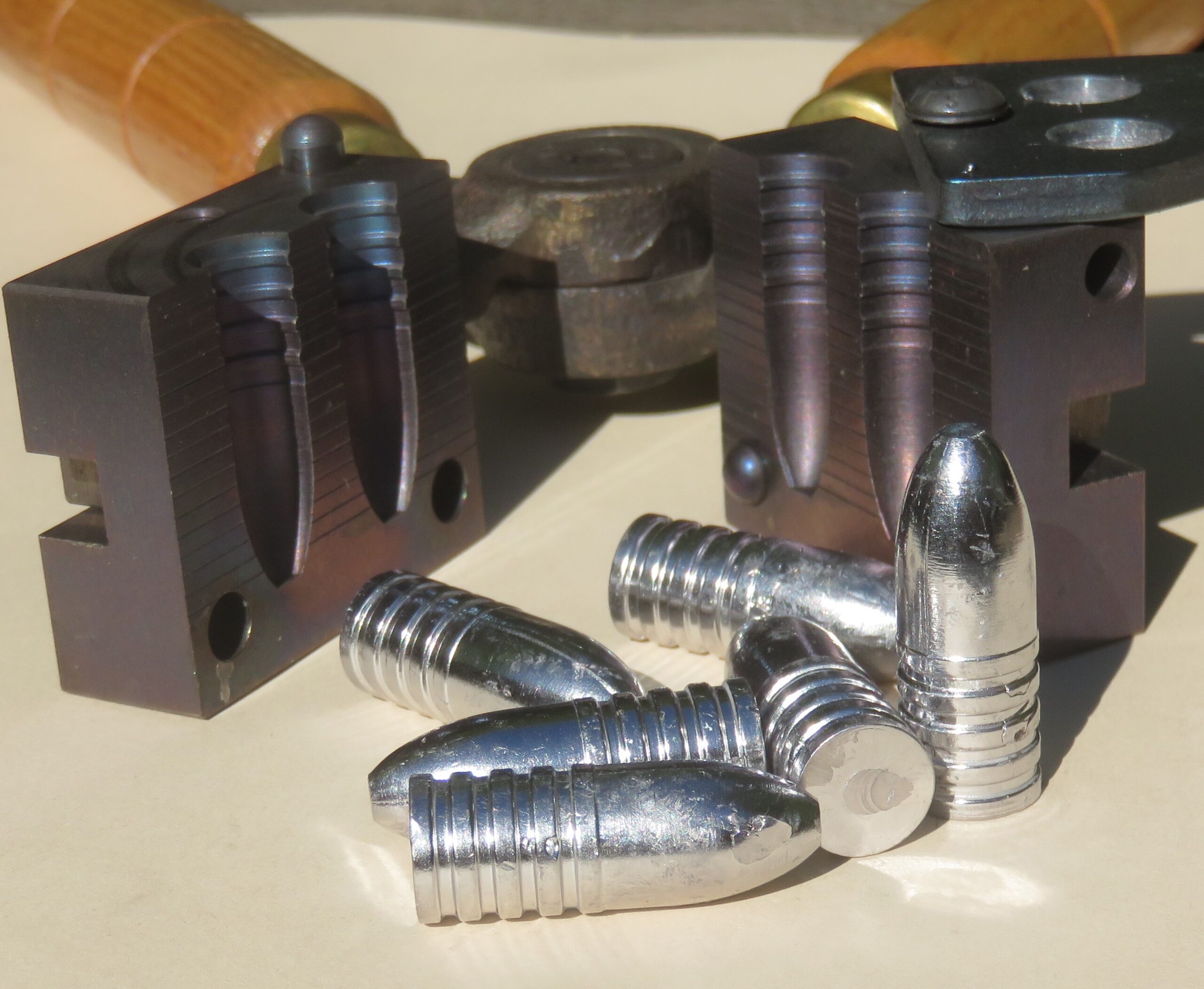
Those bullets were sized to .459” and lubed with BPC Lube from C. Sharps Arms. My first trial loading with them included seating them over 63.0 grains of Swiss 1½ Fg powder, compressed under an .060” veggie wad from John Walters. (John Walters is easily contacted by email, just send a note to thetinwadman@cox.net, he has wads of various thicknesses for most calibers. He also sells tin and lead-tin alloys.) The wad is used to compress the powder to the proper depth so that all lube grooves are seated within the cartridge case, then the sized and lubed bullets are inserted into the case with just fingertips. Following that, the loaed rounds are run through a taper crimp die to add just enough crimp to keep the bullets from falling out of the cases.
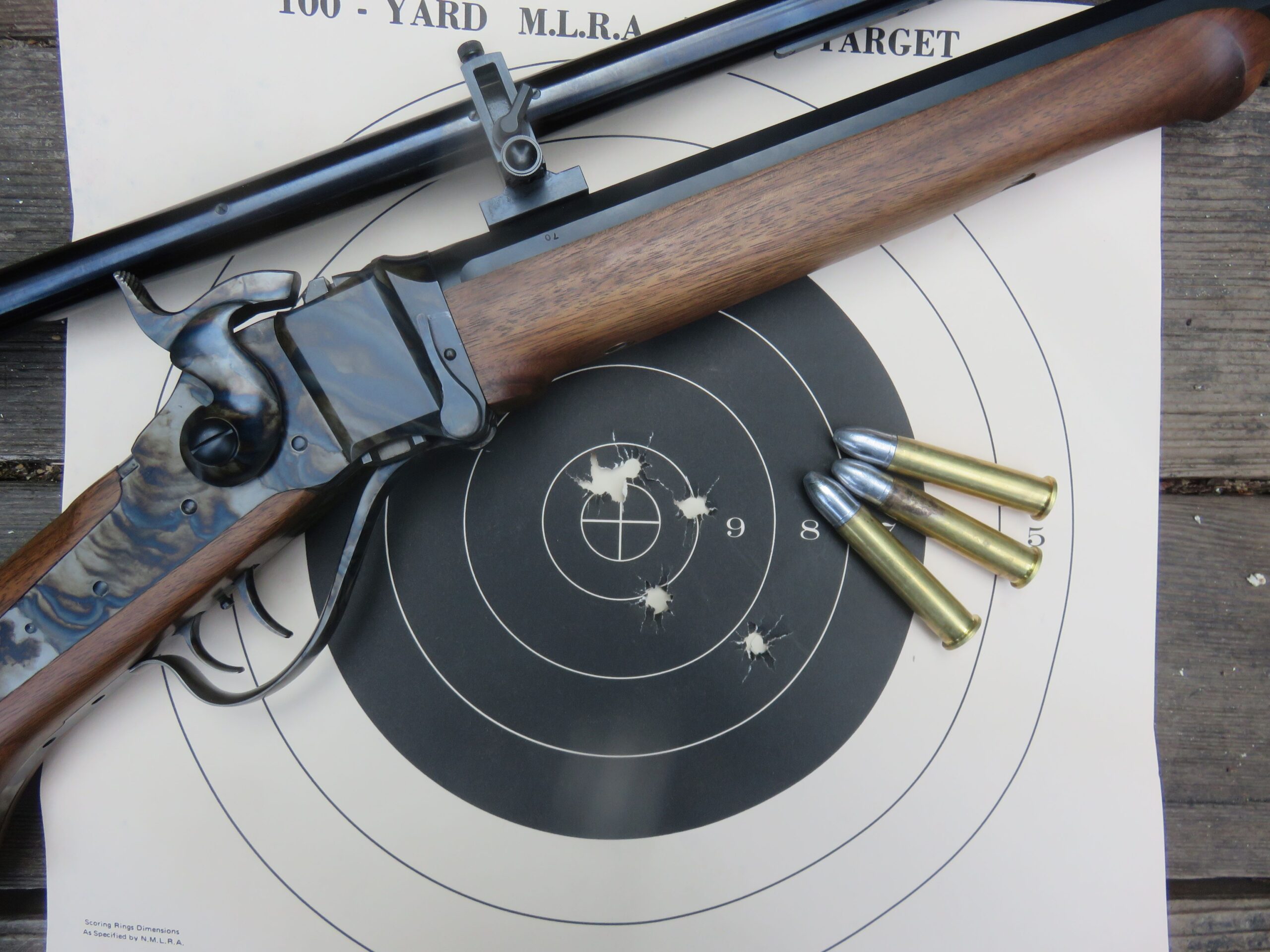
And, just to make sure all gets mentioned, these loads were primed with CCI’s large pistol primers. Several black powder cartridge shooters will put a paper “wad,” perhaps just of newspaper, over the flash-hole before putting in the powder. I’ve asked some of them why that is done and the most common reply is because a large rifle primer is hotter than necessary for black powder loads and the paper wad ‘retards’ the flash from the primer to make it act more like a large pistol primer… So, instead of using those paper wads, which I had been doing previously, now I simply use large pistol primers for nearly all of my black powder cartridge shooting.
Okay, with a supply of these loads, I headed to the rifle range with the new .45-70 Sharps, ready for some satisfying shooting. But for one reason or another, my groups were not really pleasing. I’m afraid that the human factor stepped in and when considering that new rifle, the newly loaded ammo, and me, I’m the most “human” of the mix…
Things were not all bad. For one thing, that MVA scope needed to be aligned and adjustments on that are critical. I shot a fine looking 5-shot group at 100 yards but the group was on the edge of the black at 3 o’clock. What I thought was a small adjustment moved the group to the other side of the target at 9 o’clock. Adjustments for either windage or elevation with the scope must be slight.
Then, as shooting continued, my groups opened up and I left the range without accomplishing much of anything, except emptying some more ammunition.
It could easily be said, any time you make a major change in your black powder reloads, you’re almost assured of going back to ‘tweaking.’ That’s what I was doing. So, it was back to the loading bench for me and I loaded another twenty rounds, just the same as I had one before except that the powder charge was reduced by one grain, down to 62.0 grains of the Swiss powder. This was the ‘tweaking’ I’ve been leading up to. Those twenty shots were all fired on my next visit to the range. Five of them were fired by Tom Witt, in his .45-70 Sharps which has been giving him trouble in getting a good group.
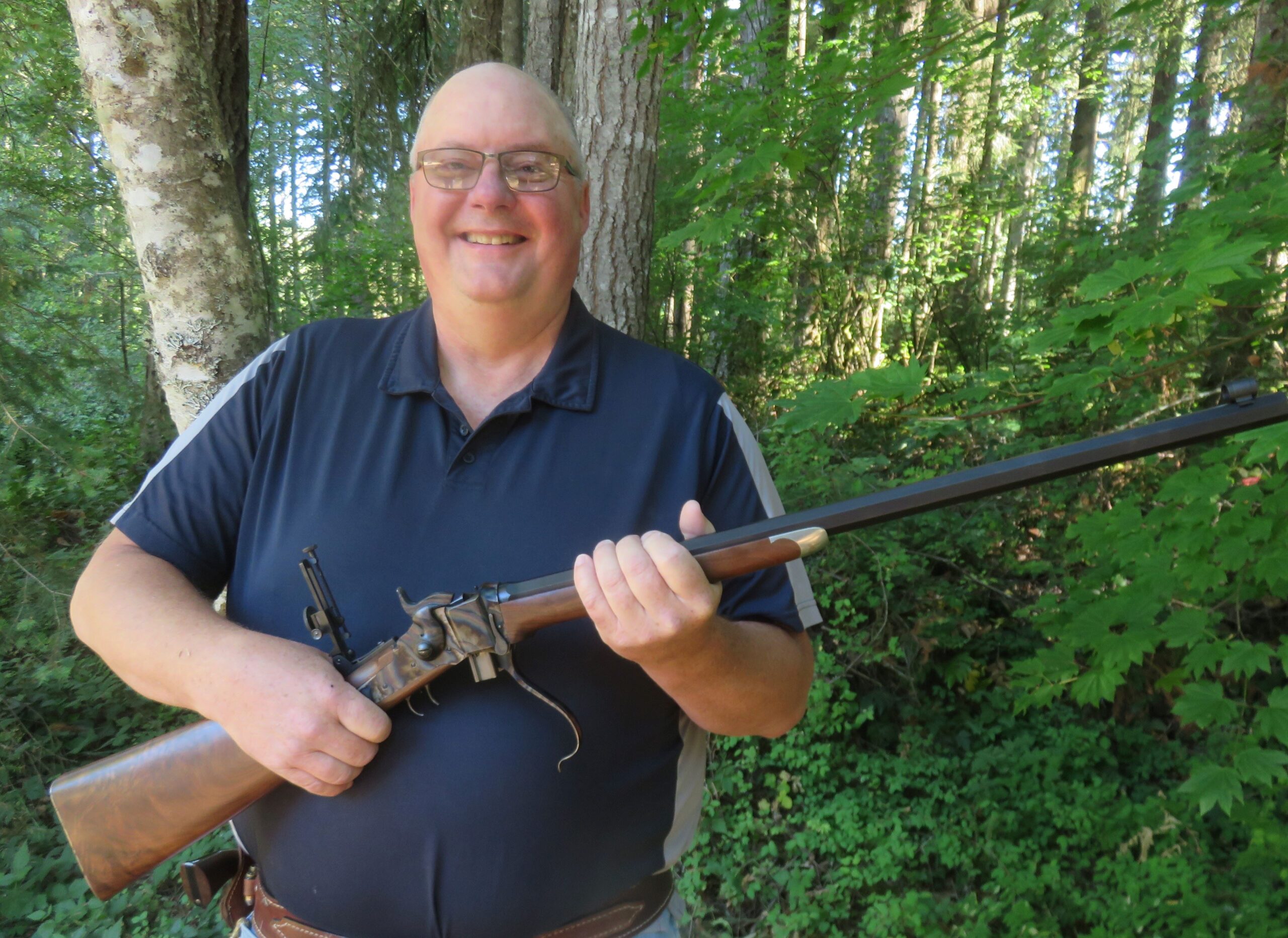
Tom’s rifle is also by C. Sharps Arms, a .45-70 with a #1 heavy 26-inch barrel, with fancy wood, which weighs 10 pounds, two ounces. His gun’s sights include a Mid-Range Deluxe on the tang and a Globe with a post behind the muzzle. It, like mine, is a Bridgeport Model. The pewter nose cap on the forearm was an option available with the old Bridgeport Sharps too. That’s a fine hunting rifle but with heavy bullets it does have a recoil that the shoulder will remember, even with the shotgun-style Bridgeport butt plate.
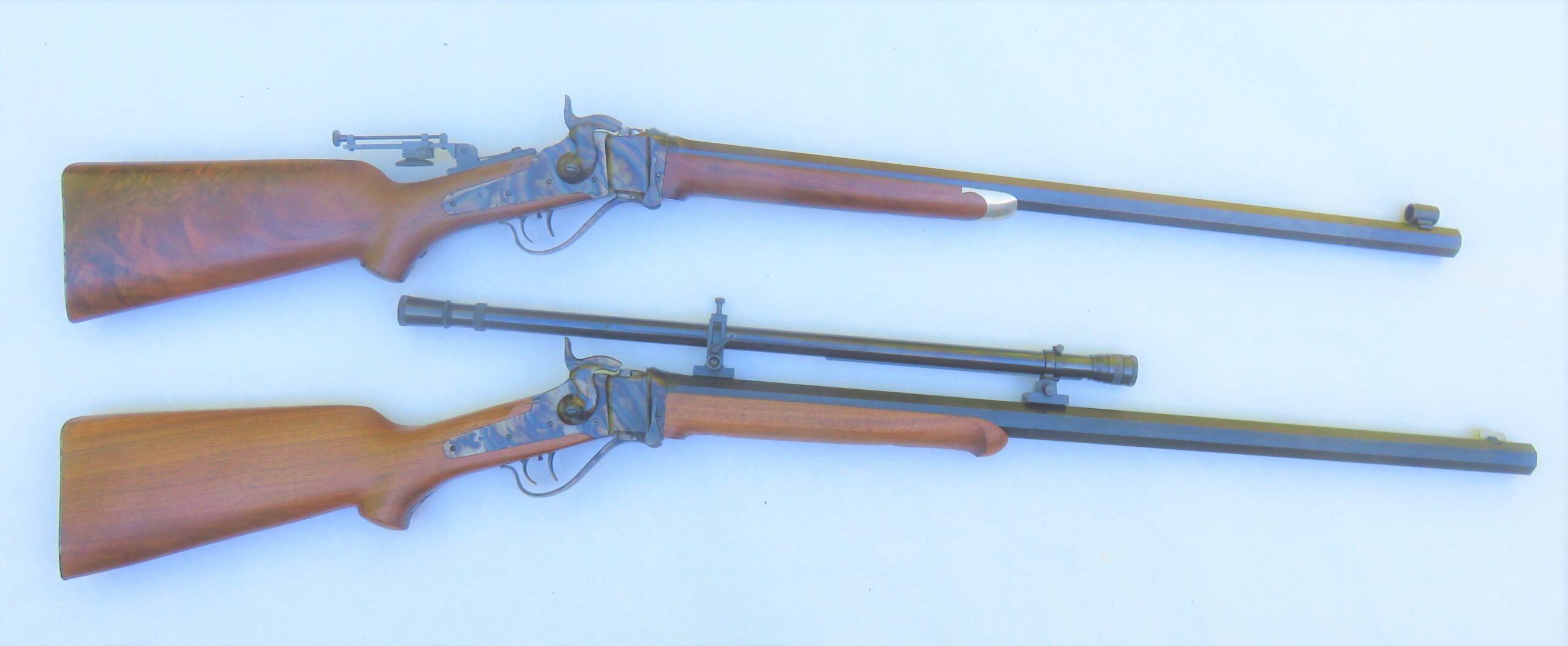
Those five shots with the 62.0 grain loads did rather well in his rifle. Good enough that he asked for more bullets so he can try some with his own loads. Of course, I recommended that he try using 63.0 grains of Swiss after trying more of them myself.
I fired ten shots of the 62.0 grain loads at one target, still trying to get the windage aligned. Then, after one more very slight adjustment to the scope, the next five shots were fired at another target. Those didn’t do too bad but they didn’t really please me because I had expected better. The windage was fine, no more adjustments needed, but the group was wider than what I wanted.
Following that, I still had 15 rounds of the previous loads which contained 63.0 grains of the Swiss 1½ Fg powder, so another target was posted at 100 yards. Tom Brown, with his spotting scope, agreed to “spot my shots.” He knew that I was after a good group and we talked about ‘doing some serious shooting’ before the first shot was fired.
To prepare the rifle’s bore, because it had just fired 15 shots, a blow tube was used to blow several moist breaths down the barrel. Doing that moistens the fouling from those previous shots which softens it, allowing the bullet of the following shot to take the rifling much easier. And we know the fouling in the bore is not all bad because it is certainly mixed with lube from those bullets that were previously fired. Cleaning or wiping the bore is generally considered to be better but wiping isn’t always necessary.
So, with Tom Brown watching the target through his scope, I fired my first shot. Instead of telling me where that shot had gone, Tom simply said, “Don’t change a thing, do everything exactly the same as what you just did.” That was tough to do, it meant that I’d have to shake, shiver, and tremble just the same as I had done before. I’d even have to flinch the same way. At least, that’s what I tried to do.
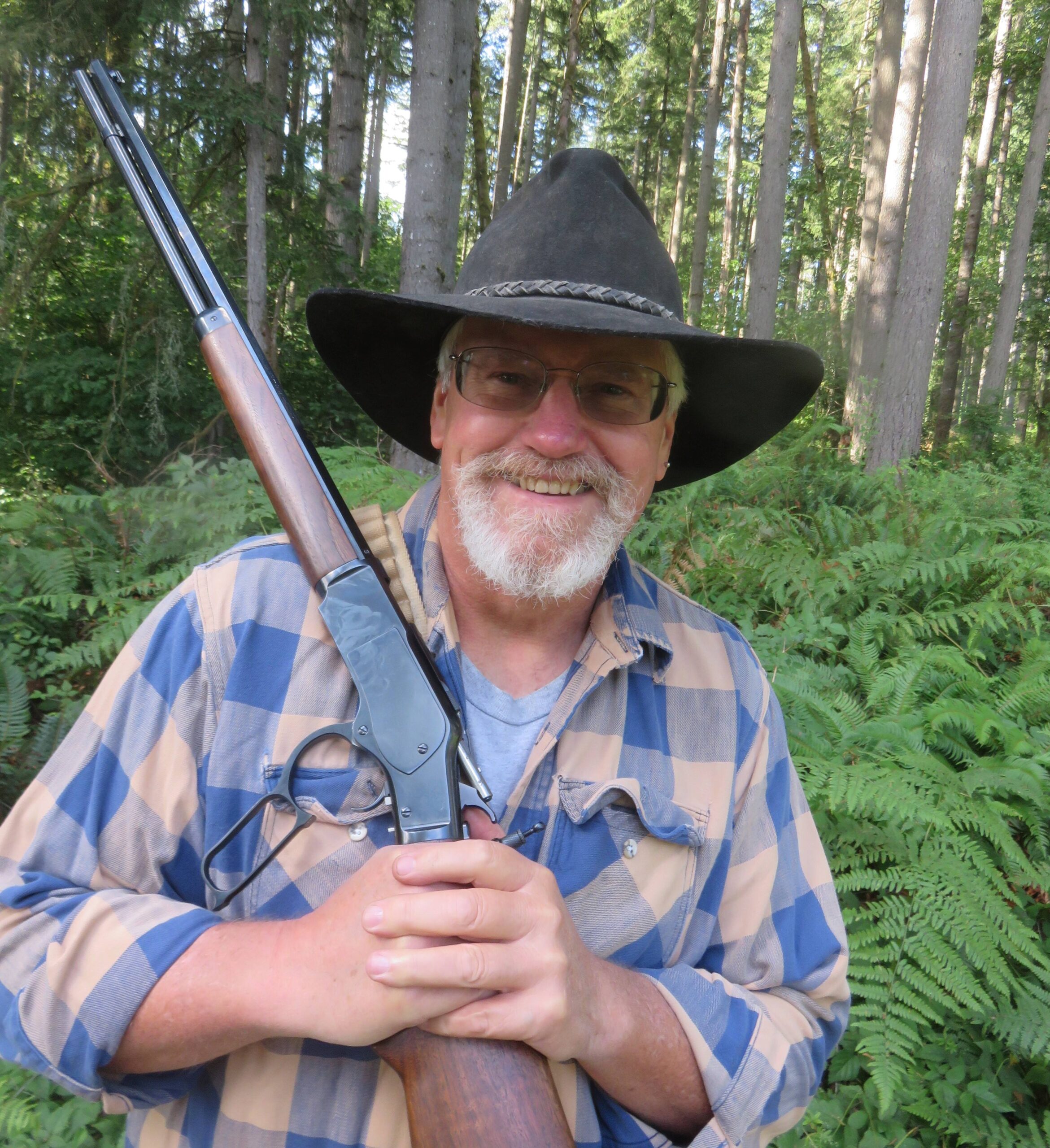
At my second shot, Tom just looked at me in disgust. Again, he didn’t tell me where the bullet had hit, all he said was, “You didn’t do things quite exactly the same.” Even so, I kept going. After shot number three, Tom just nodded his head in a positive fashion so I loaded for shot number four. That led to shot number five and Tom finally told me where the bullets were hitting on the target. Shots number one, three, four, and five were all 10s. Shot number two had crawled out to the 8-ring at four o’clock.
That was just what I wanted, a good 5-shot group, fired with the Saeco 480-grain bullets over 63.0 grains of Swiss 1½ Fg powder in my new .45-70 Sharps. While I was still at the bench, I asked Tom if we should see what a 10-shot group would look like. He shook his head to say no, then added, “I wouldn’t ruin that group if I were you.”
To say that I like this rifle would be putting it mildly. While I’ve only had it one month, maybe plus a day or two, it is the only Sharps rifle I’ve fired since getting it. That can’t last forever but I will keep using it, perhaps exclusively, with more tweaking because next I’ll try for an equally impressive group at 200 yards which will prepare me and the rifle for the coming Old West Centerfires matches. And there are silhouette matches to shoot as well with targets out to 500 meters. This simply means the tweaking of the load and the adjusting of the sights must continue and, if another new bullet is introduced, the tweaking will start all over again.



